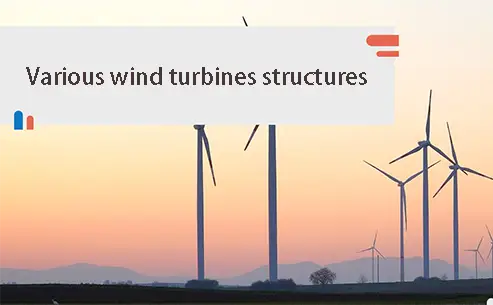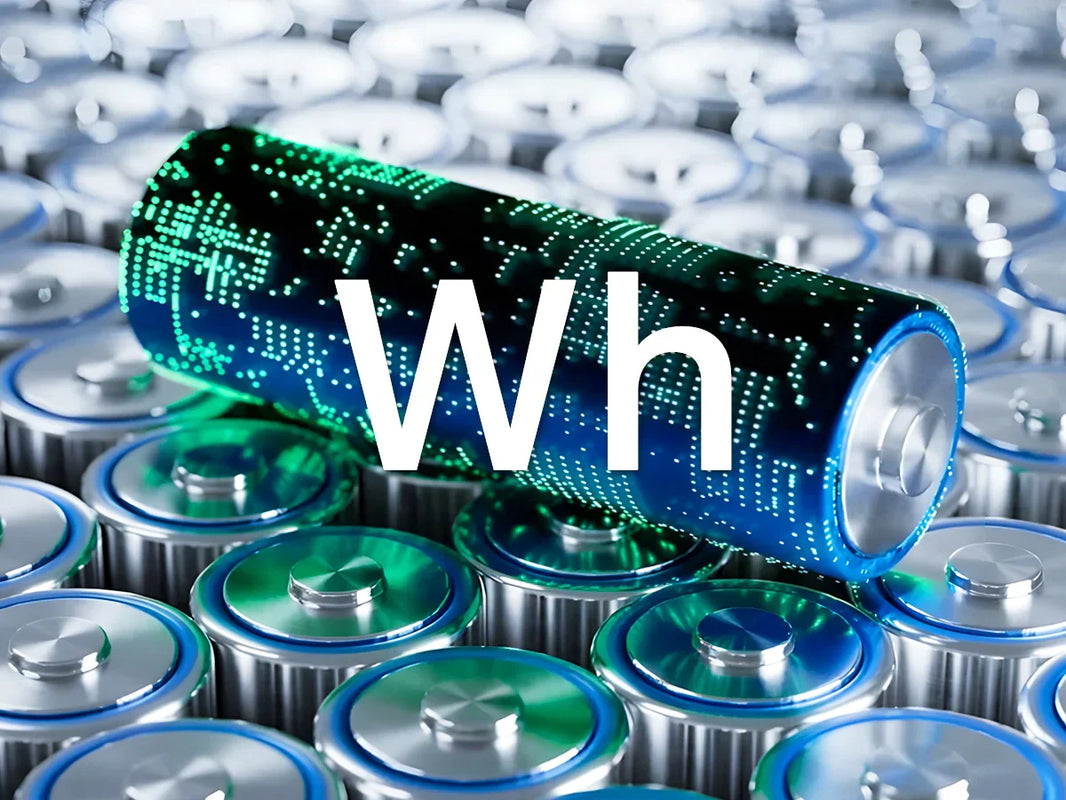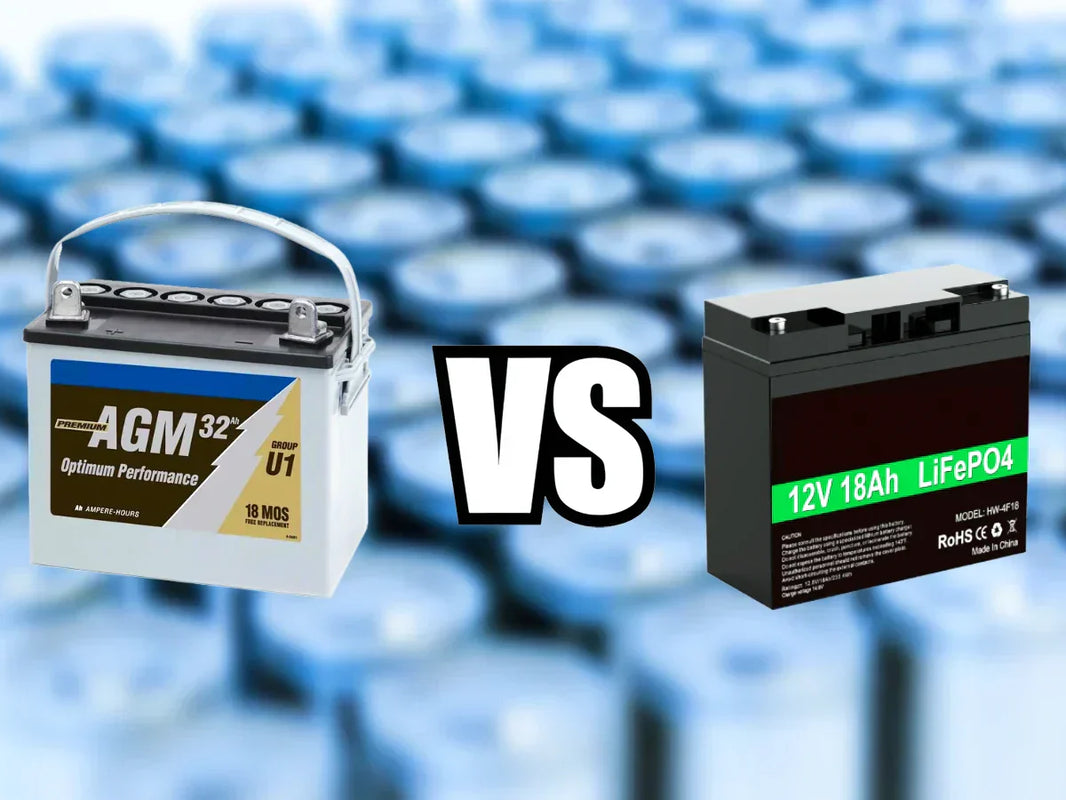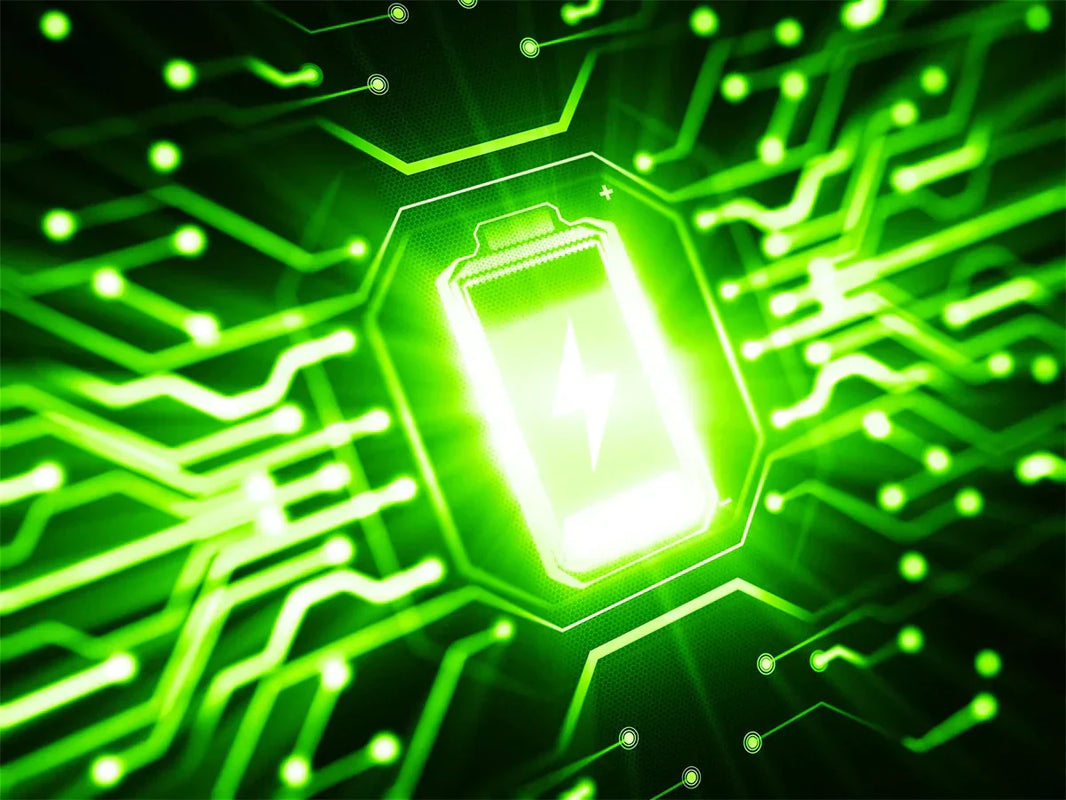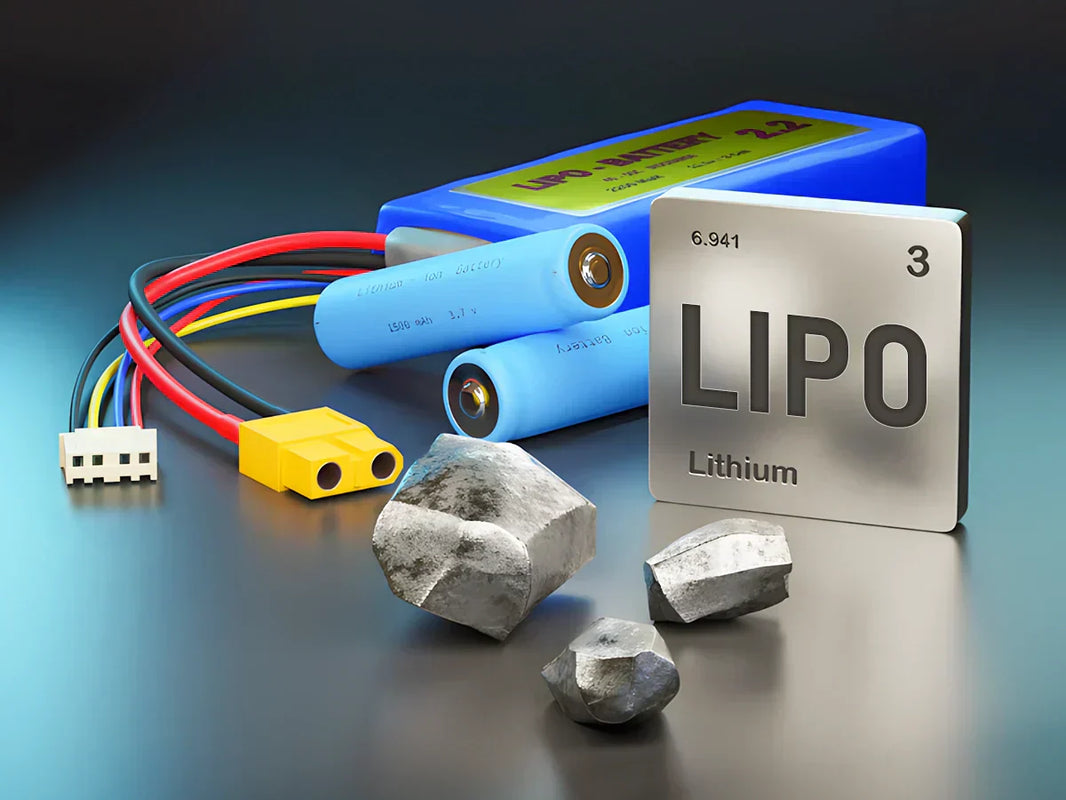
Main content:
- Horizontal axis wind turbine structure
- Characteristics of horizontal axis wind turbines structure
- The upwind and downwind directions of the horizontal axis wind turbines structure
- The relative positions of the main shaft, gearbox and wind turbines structure
- Selection of the number of blades of the wind turbines structure
- Vertical axis wind turbines structure
- Other forms of wind turbines structure
1. Horizontal axis wind turbine structure
According to the requirements for equipment selection in wind farm construction projects, this paper focuses on the selection principles of different wind turbines structures, so that readers can refer to when selecting the structure of generator sets in wind farm construction.
1.1 Characteristics of horizontal axis wind turbines structure
The horizontal axis wind turbines structure is a structural form widely used at home and abroad. The main mechanical components of the horizontal axis wind turbines structure are in the nacelle, such as the main shaft, gearbox, generator, hydraulic system and steering device. The advantages of the horizontal axis wind turbines structure are:
① Since the wind turbines structure is erected at a higher place from the ground, the power generation increases with the increase of height.
②The blade angle can realize power adjustment or stall adjustment until feathering (ie pitch change).
③The blade shape of the wind rotor blade can be designed for the best aerodynamics, and the highest wind energy utilization efficiency can be achieved.
④The starting wind speed is low, and it can start automatically.
The structural disadvantages of horizontal axis wind turbines structure are:
①The main mechanical parts are installed at high altitude, and it is inconvenient to remove large parts.
②Compared with the vertical axis phoenix machine, the design of the blade shape and the manufacture of the wind turbines structure are more complicated
③It needs to face the wind device, that is, the direction adjustment device, while the vertical axis wind turbines structure does not need the wind device.
④ The quality is large, the material consumption is large, and the construction cost is high.
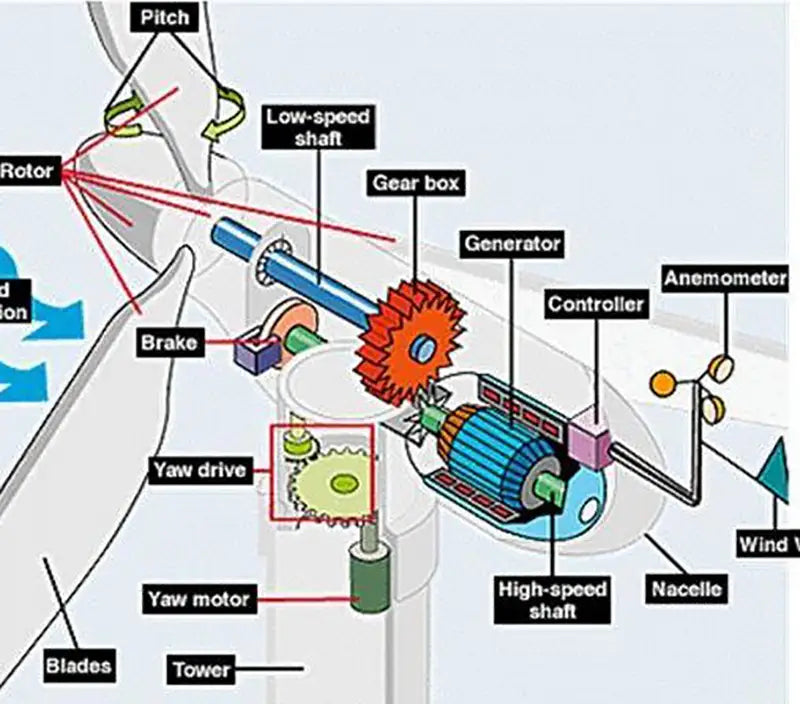
1.2 The upwind and downwind directions of the horizontal axis wind turbines structure
The horizontal axis Fengli generator set structure can be divided into two types: upwind direction and downwind direction. The main difference between the two types of wind turbine structures is that the rotor is in front or behind the tower. Some wind turbines structure manufacturers in Denmark, Germany, the Netherlands, Spain, etc. in Europe all use the wind turbine structure with the wind direction on the horizontal axis, and some manufacturers in the United States have used wind turbines structure in the downwind direction. As the name implies, for wind turbines, the wind first passes through the rotor and then reaches the tower. Therefore, the airflow passing through the rotor is affected by the tower, and the disturbance is much smaller than that in the downwind direction. The upwind direction must be installed with a wind counter, because the upwind rotor cannot automatically follow the wind direction when the wind direction changes. In the structure of small wind turbines structure, the tail, tail wheel and other mechanisms are often used. People often call this method passive yaw to the phoenix. Modern large-scale wind turbine structures mostly use a computer-controlled yaw system, using hydraulic motors or Servo motors, etc., through the gear transmission system, realize the wind of the wind turbine cabin, which is called active yaw to the wind. The arrangement of the wind measurement points of the wind turbines structure in the upwind direction is a problem that people often find difficult. If it is arranged behind the cabin, the wind speed and wind direction The measurement accuracy of the wind wheel will be affected by the rotation of the wind wheel. Some people have installed the wind measurement system on the wheel hub, but in fact, it will also be disturbed by the airflow and cannot accurately measure the wind speed at the wind wheel. Downwind of the wind rotor, due to the tower shadow effect, the blades are affected by periodic large intercept load changes, and due to the gyroscopic moment generated by the passive freedom of the wind rotor to the wind, which complicates the design of the rotor load of the wind rotor . In addition, noise is caused due to the disturbance of the airflow as each blade passes outside the tower.
1.3 The relative positions of the main shaft, gearbox and wind turbines structure
①Compact wind turbines structure. In this wind turbines structure, the wind wheel is directly connected to the low-speed shaft of the gearbox, the output end of the high-speed shaft of the gearbox is connected to the generator through an elastic coupling, and the generator is connected to the gearbox shell. The gearbox of this wind turbines structure is specially designed. Due to the compact structure, material and corresponding costs can be saved. The force on the wind wheel and the force of the generator are both transmitted to the main frame through the gearbox casing. The main axis of such a wind turbines structure will be in the same plane as the generator shaft. In such a wind turbines structure, when the gearbox is damaged and removed, both the wind wheel and the generator need to be removed, which is troublesome to remove.
② Long axis arrangement type. The wind wheel is connected with the low-speed shaft of the gearbox through the main shaft fixed on the main frame of the nacelle. At this time, the main shaft of Fengguang Power Generation Technology is independent and has a separate bearing support. The advantage of this wind turbines structure is that the wind wheel does not act on the low-speed shaft of the gearbox, and the gearbox can adopt a standard structure, which reduces the complex torque on the low-speed shaft of the gearbox, reduces the cost, and reduces the damage to the gearbox. possibility. The brakes are mounted on the high-speed shaft, reducing gearbox damage due to braking on the low-speed shaft.

1.4 Selection of the number of blades of the wind turbines structure
Theoretically speaking, reducing the number of blades and increasing the speed of the wind rotor can reduce the speed ratio of the gearbox, reduce the cost of the gearbox, and reduce the cost of the blades. To avoid the damage of the wind turbines structure, measures must be taken on the wind turbines structure, such as a seesaw mechanism, etc., and another problem is that when the rotation speed is high, a lot of noise will be generated.
2. Vertical axis wind turbines structure
As the name suggests, a vertical axis wind turbines structure is a wind machine in which the rotor blades rotate around an axis perpendicular to the ground. We usually see Darieu type and H type. The ancient drag-type wind rotors used in the past, such as Savonius wind rotors and Darrieus wind rotors, represent the emergence of lift-type vertical axis wind turbines structure.
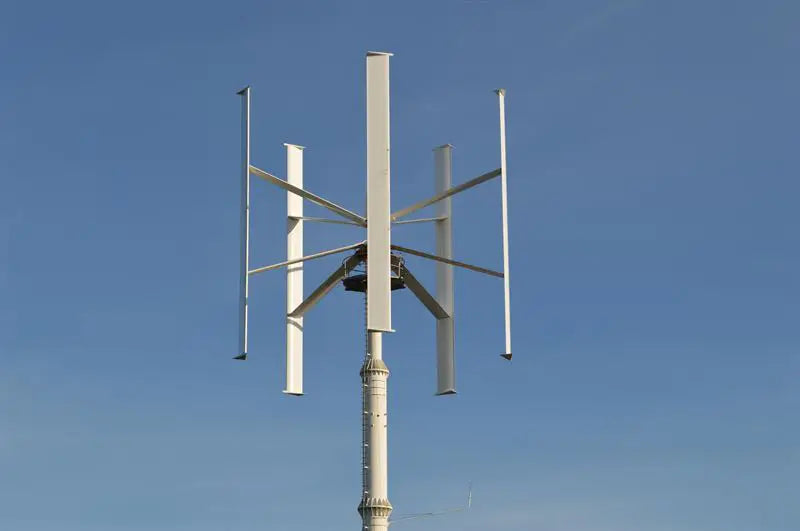
Since the 1970s, some countries have restarted the design and development of vertical shaft wind turbine structures, and some megawatt vertical shaft wind turbines structure have been put into operation in North America, but the use of such wind turbines structure still has certain limitations. The blades of the machine structure are mostly made of NACA0012~18 series of airfoils of equal section, made of glass fiber reinforced plastic or aluminum materials, and manufactured by the method of stretching. This method makes the cost of the blade relatively low and the mold is easy to manufacture. Because in a circular operating range, when the blade runs in the second half of the circle, it not only does not generate lift but also generates resistance, so that the wind energy utilization rate of this type of wind rotor is lower than that of the horizontal axis. Although it is small in mass and easy to install, and large components such as gearboxes and generators are on the ground for easy maintenance, it cannot be self-started, and the wind rotor is close to the ground, so the utilization rate of wind energy is low, and the airflow is greatly affected by the ground. . The main manufacturer of wind turbines with this type of wind turbines structure is the FloWind company in the United States, and there are nearly 2,000 such devices installed in California, the United States. FloWind has also designed an EHD type wind turbines structure, that is, the Darrieus blades are vertically elongated to increase the driving torque and make the rated output power reach 300 kw. There are also vertical axis wind turbines with variable geometry wind turbines structures, such as Heideberg in Germany and VAWT units in the UK. This kind of unit is only in the actual prototype stage, and has not yet been put into commercial operation in large quantities. Although this wind turbines structure can adjust the power by changing the position of the blades, it is expensive.
3. Other forms of wind turbines structure
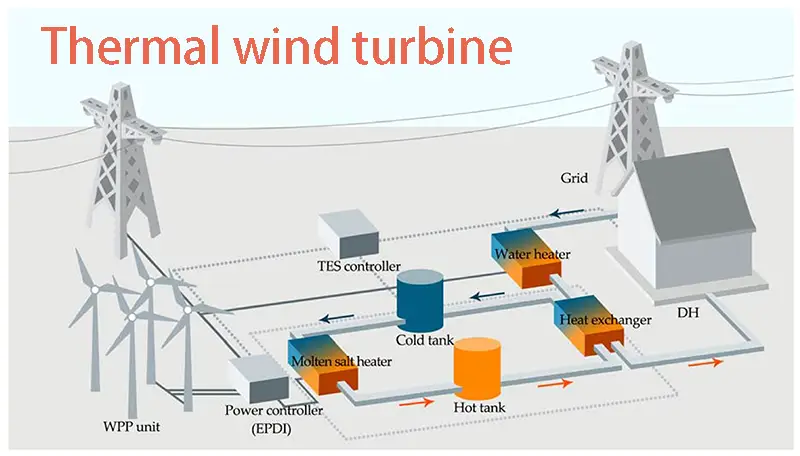
Other forms, such as air duct type, tornado type, thermal wind turbines structure, etc., are still in the development stage and cannot be considered in the selection of large-scale wind farm units, so they will not be described in detail.
Read more: Grid-connected wind power system


